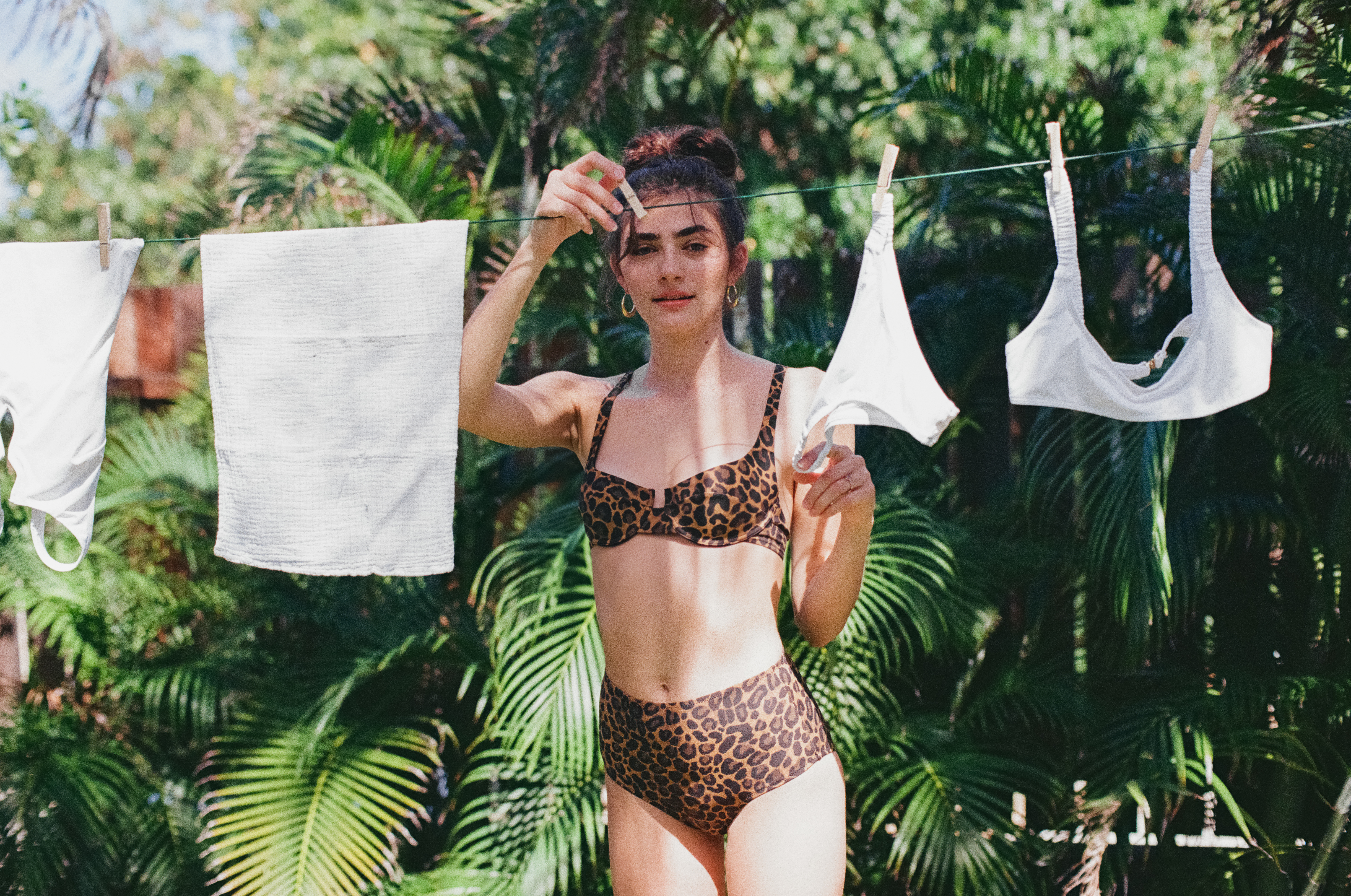
Our seas are filling up with trash. There is plastic everywhere including inside us and here we are in far above our heads. The swim industry, which has historically not held itself responsible for its microplastic contributions to our oceans, now feels like a leader thanks to a rising tide of eco-minded brands who are drawing the vital connection between the product and the environment it is designed for.
In fact, swimwear feels less like a good medium for opening up a larger discussion on conscientious consumerism. Take for instance Fair Harbor, which make’s men’s and women’s swimwear from recycled plastic bottles. Fair Harbor was started five years ago by brother and sister Jake and Caroline Danehy with the help of Colgate University’s entrepreneurship program, Thought Into Action. “There wasn’t a specific fashion house/designer/celebrity we thought about when first creating our designs. However, we did acknowledge the platform that these parties have in voicing their opinions on a matter they feel passionate about,” say the founders. “Our goal is to use our brand as a platform to promote the mitigation of single-use plastics.” Fair Harbor certainly has allowed the Danehy siblings to raise awareness about the impact individuals impact can have on a global issue. This spring they partnered with actress Bonnie Wright of Harry Potter fame to create a collaborative capsule collection which amplified through social media the reach of their mantra.

The individual’s responsibility is felt also on an internal level by many of the brands. For Agnes Fischer of Fisch, who makes swimwear from regenerated fishing nets and ocean waste, sustainability is a constantly shifting target. “It is hard to decide what is ‘sustainable enough’ when the whole idea of creating desire and making people buy stuff contradicts the whole essence of sustainability in the first place,” she says, continuing, “I have a product that is as sustainable as possible in terms of innovation, material, durability, ethics and logistics. However, product is one thing, the business model another. Swimwear needs to fit into a season-oriented industry that is fundamentally unsustainable. The entire distribution chain wants you to always come up with something new. The largest problem in fashion is spelled: i-n-v-e-n-t-o-ry. Everyone wants to see variation and novelty in order to make their edit, then the final consumer wants to make their edit, and then from that edit, there will always be leftovers. In that sense, I’m happy that the company still operates on a relatively small scale with key products that are well designed.”

The paradox of sustainable fashion is well understood by those seeking to reorient the industry. The ecological solutions range brand by brand but a focus on flattering forms and sustainable fabrics and treatments seems to be the connective tissue—and perhaps the first step towards consumer re-education: less is more. It certainly helps when smarter choices are made sexier, as Canadian swimwear brand Londre, which is also made from recycled plastic bottles, knows well. “While coming up with our swimwear line we knew we would not be willing to compromise quality for sustainability and instead wanted the two to go hand in hand,” say founders Ainsley Rose and Hannah Todd. “Through testing various materials and finishings we learnt that just because something was sustainable didn’t mean it would be long lasting or was the right fit for our company vision. A highlight to come from our research was the discovery of ChitoSanté which we now use to treat all our fabrics. ChitoSanté is a natural agent made from crab and shrimp shells (a byproduct of the shellfish industry) known for its antibacterial finish that helps stop unpleasant odors from forming. We wanted this to result in less machine washing with more beach days in between.”










 in your life?
in your life?

